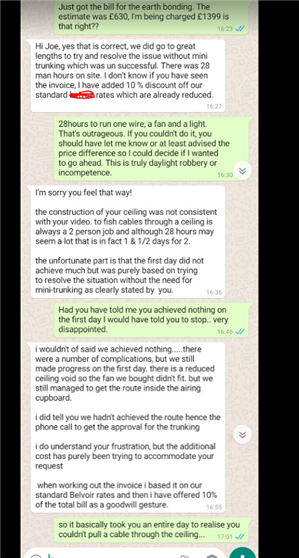Me letting agent appointed a local electrical firm to conduct an EICR report on my flat before new tenants moved in. The timescale was tight since the new tenants were due to move in on the 1st Feb.
The flat is a purpose-built flat constructed in 2005 so id be surprised if the electrics were too far out of spec.
The report came back as failed due to the following points:
1 No Bonding, substantial metal pipework in property
8 Fan is not low voltage in bathroom, and is in zone 2
the quotation for the remedial work was to install 100mm bonding from the consumer unit to the stop cock and replace the extractor with an extra low voltage fan and controller.
"estimate of a morning for 2 which hopefully will be less, however the route is not particularly easy" - £630 inc VAT.
the quote sounded high for a mornings work but due to time constraints i had to agree.
the final invoice came back as 28 hours work, £1399... so that's 28 hours work to run about 6metres of earth bonding and replace the bathroom fan when the initial quote was a morning's work for £630.
So obviously I've questioned this and after doing some digging, I found that firstly 230v fans are allowed in zone 2, and not all incoming water pipes need to be bonded if there is plastic in the incoming supply..
I'll upload screenshots of the paper work and photos of the job, but any advice would be greatly appreciated!




